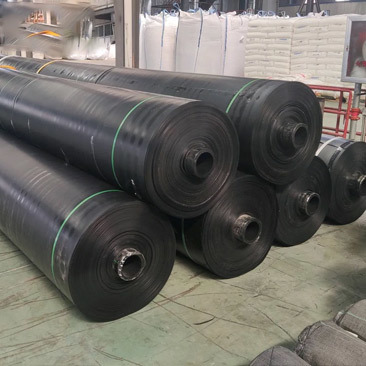Understanding Geomembrane Material: Essential Insights for Construction Professionals
Release time:
2025-09-27
Geomembrane materials are a crucial component in the construction and civil engineering sectors, particularly when it comes to managing water and soil interactions. These synthetic membranes, typically made from polymers, are utilized primarily for their impermeability and durability, making them ideal for a wide range of applications including environmental protection, waste containment, and hydr
Geomembrane materials are a crucial component in the construction and civil engineering sectors, particularly when it comes to managing water and soil interactions. These synthetic membranes, typically made from polymers, are utilized primarily for their impermeability and durability, making them ideal for a wide range of applications including environmental protection, waste containment, and hydraulic applications.
One of the primary features of geomembrane materials is their ability to create a barrier against fluid migration. This quality is particularly beneficial in landfill construction, where it prevents leachate from contaminating surrounding soil and groundwater. Additionally, geomembranes are extensively used in the construction of ponds, reservoirs, and canals, ensuring that water retains its intended volume and does not seep into the surrounding environment.
The composition of geomembranes typically includes materials such as high-density polyethylene (HDPE), low-density polyethylene (LDPE), polyvinyl chloride (PVC), and various rubberized materials. Each type of geomembrane has its unique properties, making it suitable for different environmental conditions and project requirements. For example, HDPE geomembranes offer high chemical resistance, making them suitable for industrial applications, while LDPE materials are more flexible and can adapt to uneven surfaces.
In addition to their waterproofing properties, geomembranes provide excellent resistance to UV radiation, puncturing, and physical stress, which contributes to the longevity and reliability of the structures they protect. This durability can significantly reduce maintenance costs over time, making geomembranes a cost-effective solution for various construction projects.
Moreover, the installation of geomembrane materials is a critical aspect that construction professionals must consider. Proper installation techniques are essential to ensure the integrity of the membrane and its performance. Factors such as seam welding, overlaps, and anchoring must be meticulously planned and executed to avoid any potential leaks or failures.
The use of geomembrane materials is not limited to environmental applications. They also play an important role in agricultural systems, where they are used in the construction of irrigation ponds and for managing runoff. This versatility highlights the importance of geomembranes in sustainable construction practices, as they help conserve water and protect land resources.
In conclusion, geomembrane materials are indispensable in the construction and civil engineering industries. Their unique properties, coupled with their wide range of applications, make them a fundamental choice for professionals seeking effective solutions to water and soil management challenges. Understanding the functionalities and benefits of geomembranes can equip construction professionals with the knowledge necessary to enhance project efficiency and environmental protection.
One of the primary features of geomembrane materials is their ability to create a barrier against fluid migration. This quality is particularly beneficial in landfill construction, where it prevents leachate from contaminating surrounding soil and groundwater. Additionally, geomembranes are extensively used in the construction of ponds, reservoirs, and canals, ensuring that water retains its intended volume and does not seep into the surrounding environment.
The composition of geomembranes typically includes materials such as high-density polyethylene (HDPE), low-density polyethylene (LDPE), polyvinyl chloride (PVC), and various rubberized materials. Each type of geomembrane has its unique properties, making it suitable for different environmental conditions and project requirements. For example, HDPE geomembranes offer high chemical resistance, making them suitable for industrial applications, while LDPE materials are more flexible and can adapt to uneven surfaces.
In addition to their waterproofing properties, geomembranes provide excellent resistance to UV radiation, puncturing, and physical stress, which contributes to the longevity and reliability of the structures they protect. This durability can significantly reduce maintenance costs over time, making geomembranes a cost-effective solution for various construction projects.
Moreover, the installation of geomembrane materials is a critical aspect that construction professionals must consider. Proper installation techniques are essential to ensure the integrity of the membrane and its performance. Factors such as seam welding, overlaps, and anchoring must be meticulously planned and executed to avoid any potential leaks or failures.
The use of geomembrane materials is not limited to environmental applications. They also play an important role in agricultural systems, where they are used in the construction of irrigation ponds and for managing runoff. This versatility highlights the importance of geomembranes in sustainable construction practices, as they help conserve water and protect land resources.
In conclusion, geomembrane materials are indispensable in the construction and civil engineering industries. Their unique properties, coupled with their wide range of applications, make them a fundamental choice for professionals seeking effective solutions to water and soil management challenges. Understanding the functionalities and benefits of geomembranes can equip construction professionals with the knowledge necessary to enhance project efficiency and environmental protection.






